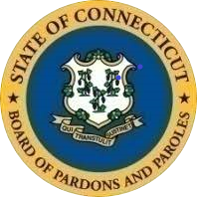Board of Pardons and Paroles
The Board of Pardons and Paroles is committed to utilizing resources more efficiently and effectively, and focusing on establishing results-based, data-driven, policies, practices, and measures of performance and outcomes. Toward this end, the Board, in partnership with the Department of Correction, worked in 2012 with the National Parole Resource Center (NPRC) and the Center for Effective Public Policy (CEPP) to prepare for full implementation of a statewide, evidence-based, risk and needs assessment system, the Ohio Risk Assessment System (ORAS), which, in CT, is called the Statewide Collaborative Offender Risk Evaluation System (SCORES). The Board of Pardons and Paroles (BOPP) and the Department of Correction (DOC) entered into a contract with the University of Cincinnati for training of DOC and parole staff and development of an automated system to house all SCORES data for analysis and validation. As of August 1st, 2014 BOPP staff began full utilization of the Ohio assessment tools for all release hearings. In January 2015, the Women’s Risk Needs Assessment (WRNA) became part of the SCORES in an attempt to better address the needs of the of female offender population.
The SCORES complements the structured-decision making framework implemented by the Board in 2012. The Structured Parole Decision-Making (SPDM) framework facilitates a systematic, guided, review of criminogenic risk and need factors assessed by the SCORES and Institutional Parole Officer interviews. The SPDM assists the Board in their focusing of questions during the parole hearing on the most salient factors established through research to be associated with criminal recidivism.
Taken together, the Board’s use of the SCORES and Structured Parole Decision Making framework result in more accurate assessment of changes in offender risk and needs, and the determination of which offenders are most suitable for release and under what conditions if released to parole. Use of these evidence-based tools facilitates more efficient identification and use of institutional and community supervision resources, which should also result in reductions in recidivism, as well as costs associated with supervision resources. In summary, the aim is to decrease recidivism and costs by ensuring appropriate offenders are released after completing specific programs with stipulations deemed necessary to manage risk using evidence based assessments.
Lastly, the Board began issuing Certificates of Employability in accordance with P.A. 14-27 effective October 1st, 2014. The Certificate is meant to provide individuals convicted of crime(s) relief from barriers or forfeitures to employment, or the issuance of licenses. The aim of these Certificates is to help facilitate gainful employment for individuals with criminal histories and reduce recidivism.

